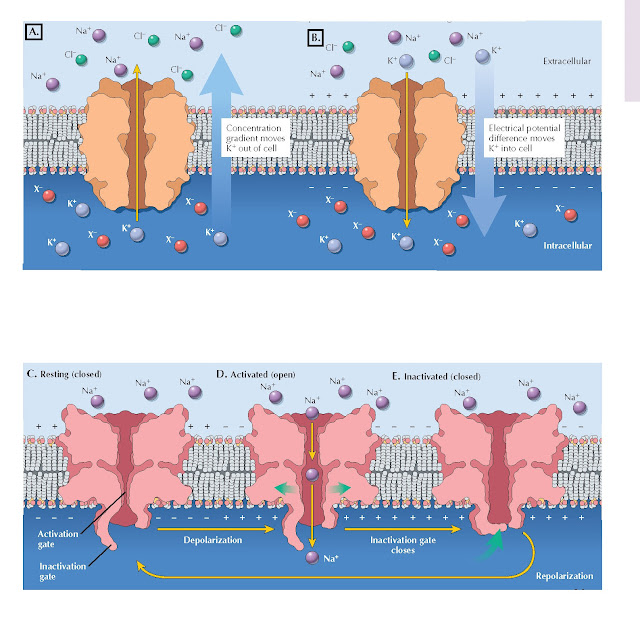NEURONAL MEMBRANE
POTENTIAL AND SODIUM CHANNELS
Illustrations of ion flow
contributing to the neuronal resting potential and three states of the sodium
channel in neuronal excitability.
A.
The
movement of ions across the cell membrane is dependent upon both concentration and electrostatic forces.
Ions flow from high concentrations
to lower concentrations as depicted by the flow of K+ ions from inside the cell, where the concentration is high, to outside the cell, where the concentrations is lower.
B.
Ions are attracted to charges
of the opposite polarity. In this example, K+ ions flow from the extracellular environment, which is positive
in relationship to the intracellular space, which is negative. Both concentration and electrostatic
forces determine flow of ions. The potential at which a through the membrane in
either direction.
Three states of the sodium
channel. C. In the resting
state, no ion flow occurs due to closure of the activation gate. D. When
the membrane begins to depolarize,
the activation channel opens and ion flow occurs. E. As the cell becomes
depolarized, the inactivation gate closes and no further ion flow occurs. Only when the cell repolarizes
does the sodium channel return to the resting state.





